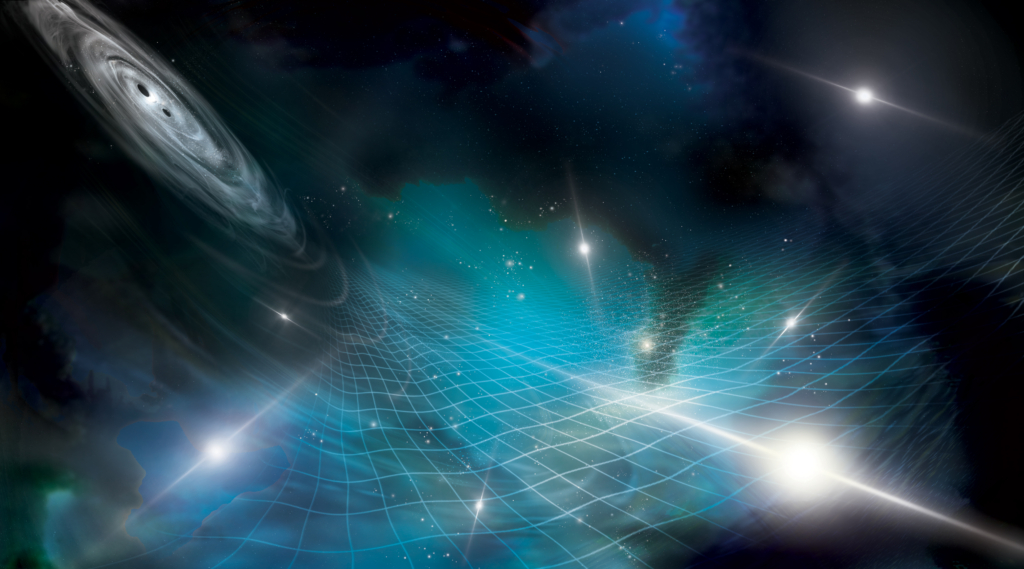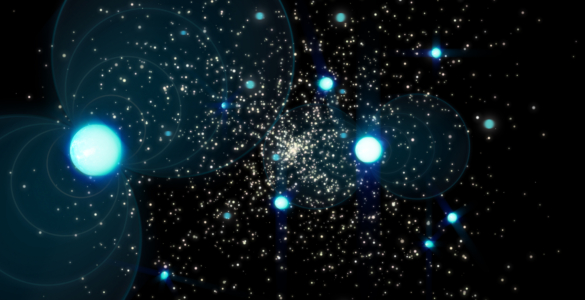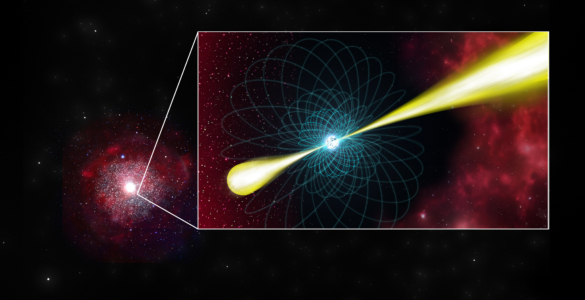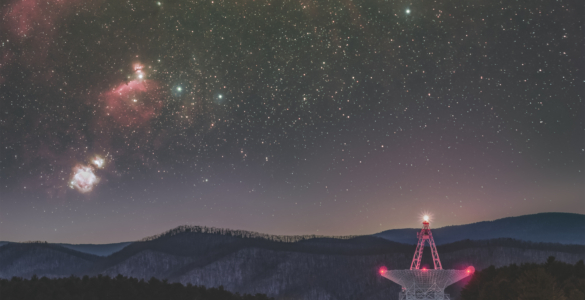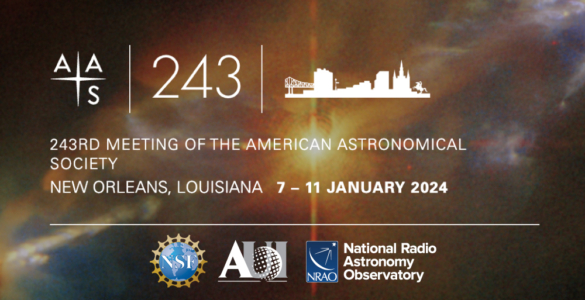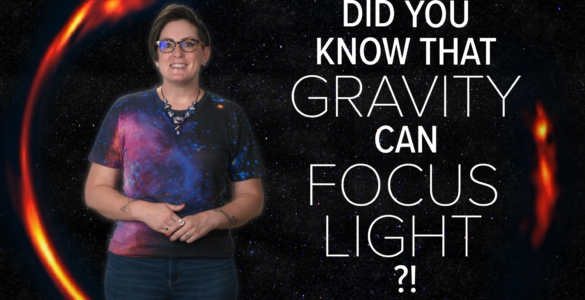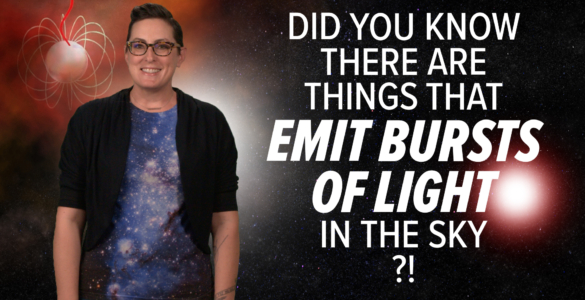For the last 15 years, the North American Nanohertz Observatory for Gravitational Waves (NANOGrav) Physics Frontiers Center has been using radio telescopes supported by the National Science Foundation— including those operated by NSF’s National Radio Astronomy Observatory— to turn a suite of millisecond pulsars into a galaxy-scale gravitational-wave detector. Millisecond pulsars are remnants of extinguished massive stars; as they spin hundreds of times each second, their “lighthouse-like” radio beams are seen as highly regular pulses. Gravitational waves stretch and squeeze space and time in a characteristic pattern, causing changes in the intervals between these pulses that are correlated across all the pulsars being observed. These correlated changes are the specific signal that NANOGrav has been working to detect.
NANOGrav’s most recent dataset offers compelling evidence for gravitational waves with oscillations of years to decades. These waves are thought to arise from orbiting pairs of the most massive black holes throughout the Universe: billions of times more massive than the Sun, with sizes larger than the distance between the Earth and the Sun. Future studies of this signal will enable us to view the gravitational-wave universe through a new window, providing insight into titanic black holes merging in the hearts of distant galaxies and potentially other exotic sources of low-frequency gravitational waves.
Read the full press release from NANOGrav.
A public event discussing the results will take place on Thursday, June 29, 2023 at 1pm Eastern Time on YouTube Live.


